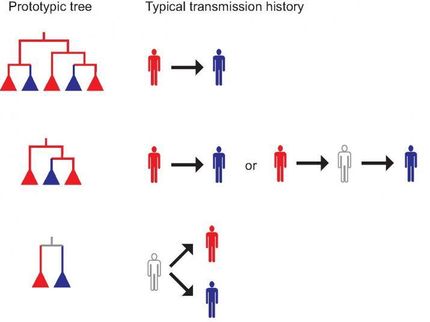Antibiotics for tuberculosis reduce deaths among people with HIV
Study shows isoniazid therapy should be considered for millions of HIV-infected people globally
As part of the largest international research effort ever made to combat tuberculosis, a team of Johns Hopkins and Brazilian experts has found that preventive antibiotic therapy for people with HIV lowers this group's chances of developing TB or dying. Specifically, they found in men and women already infected with HIV that taking isoniazid reduced deaths and new cases of active TB disease by 31 percent, while new cases of TB alone decline by 13 percent.
The research team's findings, to be published in the journal Lancet Infectious Diseases, stem from what is believed to be the largest expansion of a clinic-based, community health program designed to curb the spread of TB, and the first evidence that such a community-wide effort can be highly effective at preventing people who are co-infected from developing active TB disease.
According to senior study investigator and Johns Hopkins infectious disease specialists Richard Chaisson, M.D., his team's latest study results firmly support broad use of preventive isoniazid therapy for millions of people infected with HIV in Latin American, Asian, and Eastern European countries heavily burdened by TB.
Chaisson says TB disease remains the leading cause of death worldwide among those with HIV/AIDS and is epidemic in developing countries with the highest HIV-infection rates. Isoniazid treatment, which costs less than $1 for a full course of therapy, is already recommended by the World Health Organization to prevent TB in people with HIV disease. The policy, however, has not been widely adopted and its broad impact on the HIV-infected community never shown until the Johns Hopkins and Brazilian team's latest study.
All of the 12,816 study participants were eligible for screening for TB infection or active TB disease. Some 1,186 tested positive for TB infection, but did not have symptoms of TB sickness and could start taking 300 milligrams of isoniazid daily for six months. All received routine follow-up care for as little as a few weeks to as long as four years after initially seeking treatment at any of 29 HIV clinics across Brazil, a country hit hard by both infectious diseases. Some 838 deaths occurred during the study, which took four years to complete, and 475 developed TB. Symptoms of active TB disease, indicating the disease has progressed from latent infection, include persistent cough, chest pain, chills, fever, muscle weakness and fatigue.
"Our study results show that routine testing for TB and preventive isoniazid therapy works well at the community level in people with HIV disease in curbing the spread of TB and lowering the number who die," says Chaisson, a professor at the Johns Hopkins University School of Medicine and founding director of its Center for Tuberculosis Research.
"People with HIV disease living in all countries with rampant TB should be asking their physicians if they are good candidates for preventive isoniazid therapy," says Chaisson, who leads the overall global research effort, in support of this study and others, called the Consortium to Respond Effectively to the AIDS/TB Epidemic. CREATE, as it is known, is funded by the Bill and Melinda Gates Foundation.
When researchers restricted their analysis to 12,196 study participants who kept at least one annual check-up appointment, the overall death rate and number of new TB cases was even lower, at 55 percent. The number of active TB cases decreased by 58 percent. Among study participants who received isoniazid, commonly marketed under the brand names Niazid, Laniazid and Nydrazid, 85 percent took a full course of drugs for six months, as prescribed.
Another important finding, researchers say, was that initial TB screening of those seeking HIV care led to diagnosis of over a third (34 percent, or 250) of the total 725 new clinic patients found to have active TB. All were offered treatment for their disease but were excluded from the study analysis.
Lead study investigator and Johns Hopkins epidemiologist Jonathan Golub, Ph.D., M.P.H., says the study was, on its own, an effective screening tool, and affirms how unknown TB cases can be found when public health officials focus on community health programs in local clinics that service people more likely to become infected. In Brazil, an estimated 10 percent of people diagnosed with TB sickness are co-infected with HIV.
Golub says further research is needed to determine how long lasting are isoniazid's protective effects are and whether the single course of treatment used in the latest study is sufficient, or if repeat or lifelong antibiotic therapy is needed to suppress TB.
"Our efforts highlight the importance of continuous training in diagnosing TB, and our immediate priority is to train community doctors and nurses in HIV clinics to make TB testing part of routine HIV care," says Golub, an associate professor at Johns Hopkins. Golub points out that in Brazil, TB screening policies have been in place since 1995, but simply not followed. Golub says that once clinics involved in the study began more rigorous screening, the number of initial TB skin tests performed jumped threefold, and the number of patients taking isoniazid went up fourfold.
For the study, clinic staff were rigorously trained in correct procedures for screening all patients with HIV for possible TB infection and signs of active TB disease. Patients who tested positive for active TB disease were offered treatment, but were not included in study monitoring. Those who met study criteria were offered preventive isoniazid therapy. To detect TB, a simple skin test is initially performed, which if positive for signs of an immune response, can lead to further, confirmatory lab and X-ray testing.
Intensive training at all 29 clinics was randomly staggered every two months, allowing staff at all clinics to eventually benefit from the enhanced study effort. The staggered timeline also gave researchers a long period to assess isoniazid's effects pre- and post-training. Study participants were 61 percent male, and on average 37 years old. Sixty percent were receiving antiretroviral therapy for HIV.
Chaisson says the team next plans to evaluate faster diagnostic tests for TB, other than the initial skin test, which takes only minutes to administer, but requires a 48-hour waiting period to show any reaction. He says the ideal test would be a blood test that could be performed at the same time as routine anti-HIV tests for blood levels of CD4 immune cells.






















































